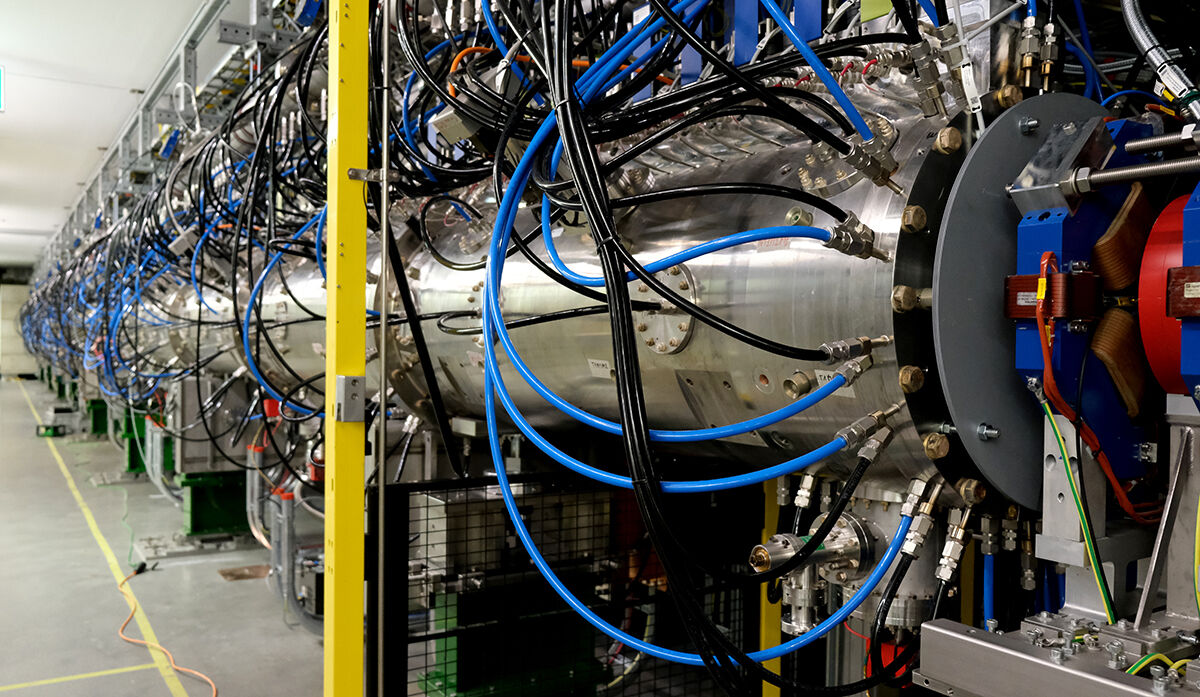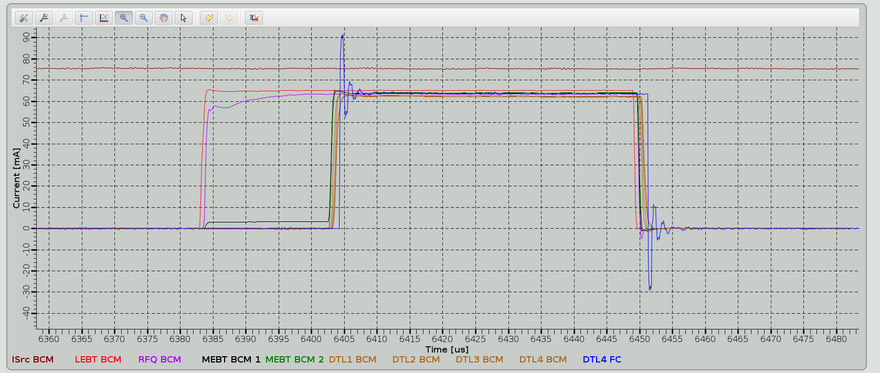
Three months of Beam Commissioning in the ESS Normal Conducting Linac has been concluded. Protons, generated at the Ion Source, have travelled a distance of approximately 42 meters, to a Faraday cup after Drift Tube Linac 4, and all installed technical components have been tested in synchronisation for the very first time.
ESS next rendezvous with protons in the Accelerator will be when testing of the full length of the linac starts, paving the way for the ultimate goal of achieving Beam on Target.
The recently completed phase of beam commissioning started about three months ago, in mid-April. The strategy was to establish beam safely to the DTL4 Faraday Cup (FC) at very low power, verify all critical systems and then gradually ramp up beam parameters and establish the operational envelope. Throughout the commissioning period, multiple issues and challenges were addressed and last week, a 62.5 mA, 50 us beam at 0.2 Hz and 74 MeV was successfully transported to the FC, the upper limit of what is achievable at this stage.
What is Beam Commissioning?
Beam commissioning refers to the process of testing, calibrating and optimising the performance of the accelerator to produce the desired beam of protons. It involves a series of tests, adjustments and measurements to ensure that the accelerator is operating according to its design specifications and delivering the intended beam characteristics.
The tests concluded today includes the first part of the linac, the normal conducting linac, operated at room temperature. The next round of beam commissioning will cover the entire length of the ESS Accelerator, including the superconducting cavities, up to the Tuning Beam Dump.
Accelerator Project Manager Ciprian Plostinar explains the achievement further.
What does it mean for ESS that Beam Commissioning is completed?
This is a fantastic achievement not just for the Accelerator project and the teams involved directly in commissioning, but for ESS as a whole and puts us in a stronger position for the very exciting but challenging upcoming phases, where significantly more hardware is added. While we have many reasons to celebrate, we also have a long to do list. Intensive testing periods like the one just concluded, are good learning opportunities not just in addressing technical challenges, but also in understanding the limits of our current processes, our tools and our strategies. After the holiday period, we plan to capture as much of this in an actionable plan at a lessons learned exercise.
And what happens next?
Now that the NCL commissioning is concluded, while some teams will work intensively on analysing all the data taken, we are preparing for a heavy installation and testing period on all fronts and for all work packages. The temporary shielding wall separating the Normal Conducting Linac from the Superconducting Linac will be removed in August and the entire tunnel will become a single area. Twenty cryomodules have been tested and are waiting to be installed, as well as the last DTL tank (DTL5), so we’re expecting a very visible transformation that will conclude next year with a Safety Readiness Review (SRR4) and the next commissioning round all the way to the Tuning Beam Dump (TBD).
The phase after this is to send beam to Target which adds another level of complexity in terms of integrating the Accelerator, Target and NSS in a single machine. This is currently scheduled for 2025.



























